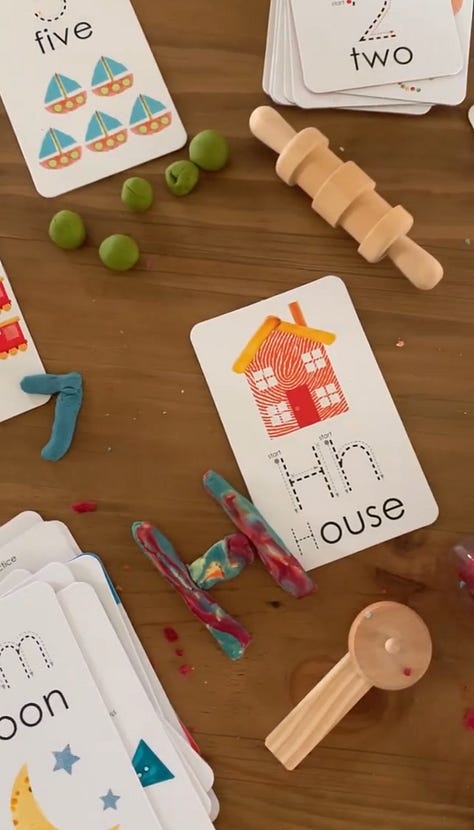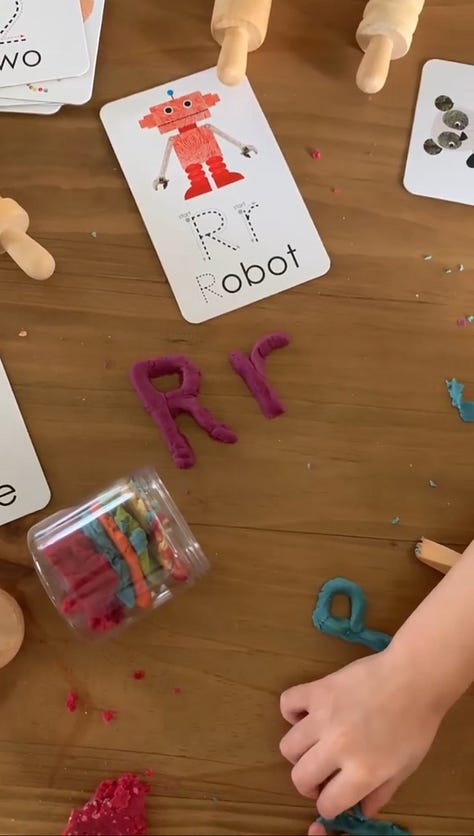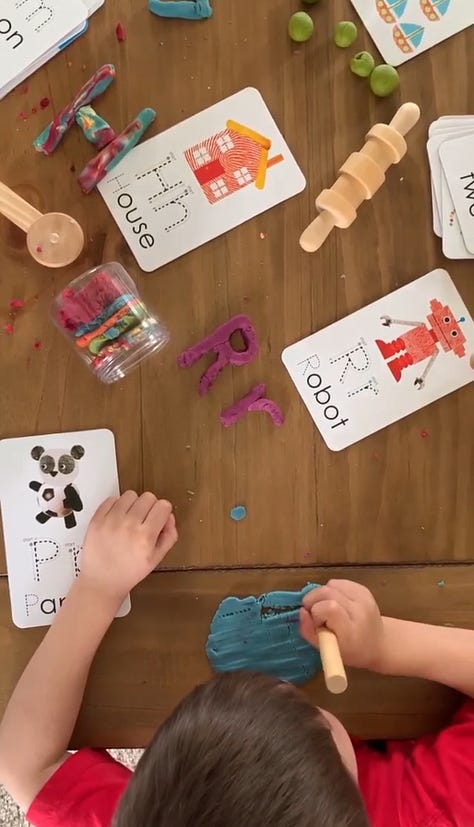Help Your Child Say More Words with Play-Doh
Simple playtime moments that build big language skills
Literacy for Littles is a warm collection of early reading tips, favorite tools, and real-life learning curves from raising young readers. Powerful insights I’d share with a fellow parent.
Does your little one love Play-Doh? It’s no secret that Play-Doh is amazing for independent and sensory play—but did you know it’s also a powerful tool to help build your child’s language skills?
When you join in the fun, the possibilities are endless for the words you can model during play. Even if your little one doesn’t mimic you right away, every moment you spend narrating, describing, and engaging is planting seeds for future communication. The more language they hear in context, the more they learn.
Some of my favorite words to use while playing with play-doh include:
Requesting words: help, again, more
Action words: squeeze, cut, pull, roll, poke, squish, push
Concepts: in, out, big, little
Describing words: squishy, hard, flat, round



You can also use play-doh to talk about colors and shapes, or even have fun making animals or pretend food like an orange or an apple!
While you’re playing with play-doh together, the following tips might help you to encourage language:
Repetition - Repeat words over and over. Say target words even more times than you think you need to. Repetition helps your child learn new words and also increases the likelihood that they will imitate you as you say them.
Join in - Make sure you have your own play-doh, so you can have fun with your child. You will be able to be part of the activity but still encourage independence in your child.
Follow their lead - If your child isn’t responding to what you’re saying or doing with the play-doh, copy and talk about what they’re doing.
Keep it simple - Use a lot of short phrases and single words. When you keep your language simple, your child is less likely to feel overwhelmed.
Don’t be afraid to be silly! - You can add fun sound effects or do silly voices while you play. Your child might be more likely to imitate you!
You can feel confident teaching your little one to communicate without adding one more thing to your busy schedule! I’m excited to see how you and your child grow!
If you appreciate this post, please spread the word! Passing along my Substack link helps this community grow.
The Second Act is an entirely reader-supported publication. Click here to subscribe or gift a friend a subscription here (if a friend sent you this —tell them thanks!). Anything you want covered? Questions? Reply with a comment below! You can also find me on Instagram. Please come say hi!
Can you do me a favor? If you like this, will you hit the heart ❤️ on the bottom of your email? I promise it helps!






